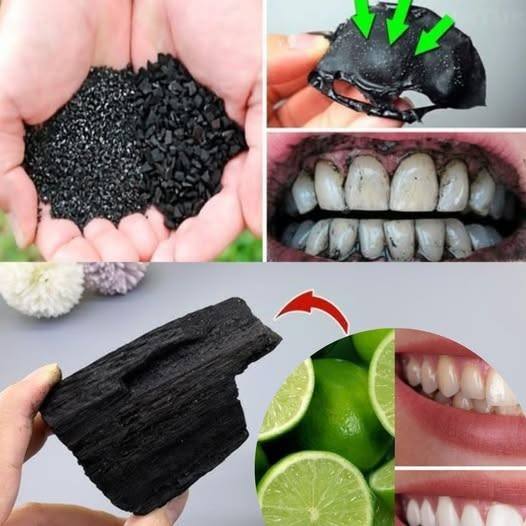ADVERTISEMENT
### **Activated Charcoal: Beyond Teeth Whitening – A Comprehensive Look at Its Benefits for Your Body**
Activated charcoal has been a popular ingredient in health and wellness circles for a number of years, most notably for its ability to whiten teeth. However, its benefits extend far beyond that — offering a range of uses for your body, from detoxification to digestive health and even skin care. If you’ve only heard about activated charcoal in the context of teeth whitening, prepare to discover a whole new world of advantages it offers for your overall health and well-being.
In this article, we’ll explore activated charcoal’s many uses, benefits, and potential risks. We’ll break down how this remarkable substance works, how it can improve your health, and why it has earned its place in both traditional medicine and modern wellness trends. Whether you’re looking to detoxify your body, improve your skin, or even use it as a natural remedy for a variety of ailments, activated charcoal may be the secret ingredient you never knew you needed.
—
### **What Is Activated Charcoal?**
Activated charcoal is a fine, odorless, black powder that is produced by heating carbon-rich materials such as wood, coconut shells, or peat in the presence of a gas. This process creates tiny, low-volume pores that increase the surface area of the charcoal, making it extremely effective at absorbing toxins, chemicals, and other impurities. Unlike the charcoal used for grilling, activated charcoal is processed to have millions of tiny pores that allow it to capture and trap harmful substances.
Activated charcoal is widely used in emergency rooms to treat poisoning or drug overdoses due to its powerful ability to bind to toxins in the stomach and intestines, preventing them from being absorbed into the bloodstream. Beyond its use in emergencies, it has found its way into many other areas of health and beauty, where it is praised for its detoxifying properties.
—
### **1. Teeth Whitening: Activated Charcoal’s Most Popular Use**
The first and most well-known application of activated charcoal is for teeth whitening. Charcoal’s natural porous structure helps it absorb plaque, bacteria, and other impurities on your teeth, making them appear whiter and cleaner. It’s often found in toothpaste and powders marketed for whitening purposes, and many people have turned to charcoal as a more natural, chemical-free alternative to traditional teeth-whitening methods.
#### **How Does It Work?**
When used on your teeth, activated charcoal adheres to particles that cause staining, such as food, drink, and tobacco residue. It also absorbs some of the toxins that can build up on the surface of your teeth, leaving them visibly cleaner and brighter. While activated charcoal can help remove surface stains, it’s important to note that it doesn’t bleach teeth in the same way that hydrogen peroxide does. Instead, it works by polishing the surface and removing debris.
#### **How to Use Activated Charcoal for Teeth Whitening**
There are a variety of ways to use activated charcoal to whiten your teeth. You can purchase toothpaste that contains activated charcoal, or you can make your own at home by mixing activated charcoal powder with water. Here’s a simple method:
1. **Dip a wet toothbrush into activated charcoal powder.**
2. **Gently brush your teeth in circular motions for 2-3 minutes.**
3. **Rinse thoroughly with water.**
4. **Repeat 2-3 times a week for optimal results.**
While charcoal can help whiten teeth, it should be used sparingly. Overuse may potentially lead to enamel erosion, so it’s important to maintain a balanced oral care routine with fluoride toothpaste to protect your enamel.
For Complete Cooking STEPS Please Head On Over To Next Page Or Open button (>) and don’t forget to SHARE with your Facebook friends
